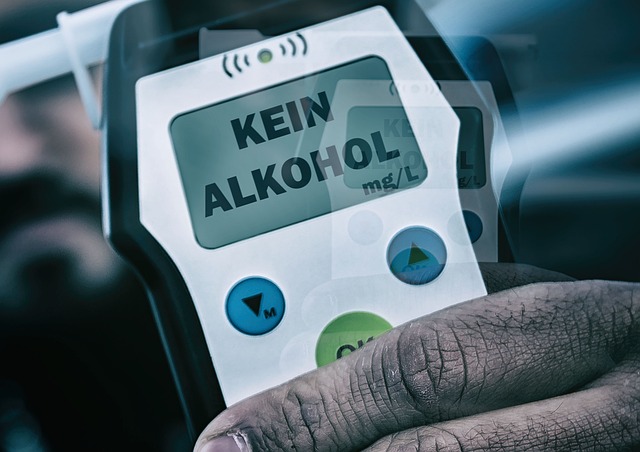When transitioning vehicle ownership, a meticulous approach to the car title verification process is paramount. This article elucidates the essential steps for transferring a car title, emphasizing the role of the DMV in upholding legal and financial integrity. Whether you’re opting for an online title transfer or completing the necessary paperwork in person, understanding the DMV transfer checklist and scheduling a title transfer appointment are key to a smooth transaction. We delve into the importance of ownership verification at the DMV, the necessity of a thorough vehicle title inspection before transfer, and the completion of the DMV title transfer form. By adhering to these guidelines, you can ensure a transparent and efficient car title transfer process.
- Navigating the Title Transfer Process: An Overview
- Essential Documentation for a Seamless DMV Title Transfer
- Online Title Transfer: A Guide to Transfer Car Title Online
- The Importance of Ownership Verification at the DMV
- Conducting a Thorough Vehicle Title Inspection Before Transfer
- Completing the DMV Title Transfer Form and Scheduling an Appointment
Navigating the Title Transfer Process: An Overview

Navigating the car title transfer process involves several critical steps to ensure a smooth transition of vehicle ownership. The first step is to complete the DMV transfer checklist, which typically includes gathering necessary documents such as the current title, proof of sale, and identification. These documents serve as the foundation for ownership verification DMV procedures. Once you have your documents in order, you can proceed with scheduling a title transfer appointment at your local DMV office to hand over these documents and undergo the vehicle title inspection. This inspection is crucial to confirm that the title reflects the correct owner and that there are no outstanding liens or encumbrances on the vehicle.
For those seeking convenience, many states now offer the option to transfer car titles online, streamlining the process with digital DMV title transfer forms. This online process begins by filling out the appropriate form on the state’s official website, followed by submitting the required proof of sale and any other documentation that the DMV requires for verification of title transfer. It’s imperative to review the specific requirements in your jurisdiction, as they can vary. After submission, you may be prompted to upload digital copies of your documents for review. Once the DMV has confirmed all details are correct, they will process your application and update the vehicle’s records accordingly. Remember to check the fee schedule for title transfer to ensure there are no unexpected charges that could delay the process. The DMV proof of sale is a critical document that confirms the transaction between the buyer and seller, and it must be presented as part of this verification process. Completing these steps diligently will facilitate a timely and accurate title transfer and help maintain clear vehicle ownership records.
Essential Documentation for a Seamless DMV Title Transfer

When transitioning vehicle ownership through the DMV, meticulous preparation is key to ensure a smooth and efficient process. A critical component of this process is the essential documentation required for a seamless DMV title transfer. Prospective owners must complete a DMV title transfer form, which serves as the primary document for the transfer car title online or in person. This form typically includes information about both the buyer and seller, as well as details regarding the vehicle itself. Alongside this form, proof of sale is necessary to verify the transaction between parties and to confirm that the vehicle has been legally purchased from the previous owner.
The DMV transfer checklist also mandates a vehicle title inspection to ascertain the legitimate ownership status and to ensure there are no existing liens against the vehicle. This step is crucial as it protects both the buyer and seller from potential legal issues arising from undisclosed encumbrances. Additionally, the previous owner’s signature is required on the title to indicate their consent to transfer the car title. Upon completing the online title transfer process or at a DMV title transfer appointment, applicants must submit this signed title along with any other required documentation. The required paperwork often includes a valid photo ID for both parties, odometer disclosure for vehicles under ten years old, and any applicable proof of insurance. By adhering to the DMV’s verification of title transfer process and understanding the associated fees beforehand, individuals can expedite their car title transfer without unnecessary delays. Ensuring all i’s are dotted and t’s crossed during this process will facilitate a swift and accurate transfer of vehicle ownership.
Online Title Transfer: A Guide to Transfer Car Title Online

When transitioning vehicle ownership, opting to transfer a car title online can streamline the process, saving time and reducing paperwork. The first step in the online title transfer process is to gather all necessary documentation, which typically includes a completed DMV transfer checklist, proof of vehicle insurance, a filled-out DMV title transfer form, and the current title to the vehicle if you’re the lienholder. Additionally, you must provide proof of sale, which serves as ownership verification required by the DMV. This documentation ensures that the title transfer is legal and that the vehicle is free from any outstanding liens. Before initiating the online transfer, it’s crucial to review the specific requirements set forth by your state’s Department of Motor Vehicles (DMV), as they may vary. Once you have all the required paperwork, you can schedule a DMV title transfer appointment, if necessary, to complete the process. The appointment allows for a final vehicle title inspection and ownership verification DMV before the new title is issued. Throughout this digital process, the DMV’s online platform will guide you through each step, from submitting the necessary forms to making any required title transfer fee payments. This user-friendly approach to title transfers makes it accessible for individuals to manage their vehicle ownership changes efficiently and conveniently.
The Importance of Ownership Verification at the DMV

When transferring a car title, ownership verification at the DMV is paramount to ensure that the title being transferred is legitimate and free from encumbrances such as outstanding liens. This process safeguards both the buyer and the seller by confirming that the vehicle’s title is clear and that the individual transferring the title has the right to do so. The DMV’s title verification checklist, which includes required documents like the completed DMV title transfer form, proof of sale, and proof of ownership, must be carefully followed to avoid delays or rejections. For those looking to expedite the process, many states now offer the option to initiate a transfer car title online, streamlining what was once a cumbersome in-person procedure. This online facility simplifies the vehicle title inspection and title transfer appointment processes, making it more accessible for individuals to manage their car’s title transfer with ease. It is essential for vehicle owners to be aware of their jurisdiction’s specific title transfer requirements, including any associated fees, to ensure a smooth transition of ownership. Engaging with the DMV’s online portal can provide clarity on these matters and facilitate a quicker transfer of the car title, ensuring peace of mind for all parties involved in the transaction.
Conducting a Thorough Vehicle Title Inspection Before Transfer

When transitioning vehicle ownership, conducting a thorough vehicle title inspection is a critical step in the DMV title verification process. This inspection ensures that the title being transferred is clear of any encumbrances and that the individual transferring the car title has legitimate ownership rights. The DMV’s transfer checklist serves as a guide for collecting all necessary documentation, which typically includes the completed DMV title transfer form, proof of sale, and evidence of no outstanding liens or loans against the vehicle. This due diligence is essential to avoid complications during the transfer process. Prospective owners should verify their title transfer eligibility by consulting their jurisdiction’s specific requirements, which may include a DMV title transfer appointment in some states. By adhering to these steps and ensuring all paperwork is in order beforehand, individuals can streamline the vehicle title transfer, potentially even completing the process online through the DMV’s online portal if eligible. This not only saves time but also provides peace of mind that the transfer has been conducted legally and efficiently, with no oversights that could cause delays or complications later on. It is imperative to approach the DMV title transfer process methodically, using the available resources such as the DMV’s official website for guidance on the verification of title transfer and associated fees. This proactive approach not only aids in the smooth transfer of car titles but also ensures compliance with state laws, thereby upholding the integrity of vehicle ownership records.
Completing the DMV Title Transfer Form and Scheduling an Appointment

When transitioning vehicle ownership, one of the critical steps is completing the DMV Title Transfer Form accurately. This form serves as a conduit between the seller and buyer, formalizing the transfer of car title online or offline. It’s imperative to provide all required information, including the vehicle identification number (VIN), current and prospective owners’ details, and any lienholder information if applicable. A comprehensive DMV transfer checklist can guide individuals through this process, ensuring all fields are filled out correctly and all necessary documentation is included. This checklist typically includes the completed application form, proof of sale, and a valid government-issued ID for both parties.
Once the form is filled out, the next step is to schedule a DMV title transfer appointment. While some jurisdictions allow for the vehicle title inspection and ownership verification DMV to be conducted entirely online, thus avoiding an in-person visit, others may require a physical presence for certain aspects of the process. The DMV title transfer form must be accompanied by proof of insurance, odometer disclosure, and any applicable fees at the time of the appointment. Scheduling this appointment in advance can help prevent delays and ensure a smooth transition, allowing both parties to proceed with confidence that the car’s title has been properly transferred. The DMV’s online system for scheduling appointments and processing title transfers is designed to streamline the experience, making the process more efficient and user-friendly. It’s advisable to review the specific requirements of your state’s DMV, as procedures and fee structures can vary.
When transferring a vehicle title, adherence to the DMV’s processes and requirements is paramount. The article has outlined the critical steps involved in this transaction, from the necessity of ownership verification at the DMV to the advantages of utilizing online services for transferring car titles. A comprehensive DMV transfer checklist ensures all necessary documentation, such as proof of sale and a completed DMV title transfer form, is submitted, facilitating a smoother process. Conducting a thorough vehicle title inspection beforehand safeguards against potential issues during the transfer. For those looking to expedite the process, scheduling a title transfer appointment at the DMV or opting for the convenience of online title transfer services are valuable options. By understanding and following these guidelines, vehicle owners can navigate the title transfer process with confidence and ease, ultimately enjoying a seamless transition of car ownership.



